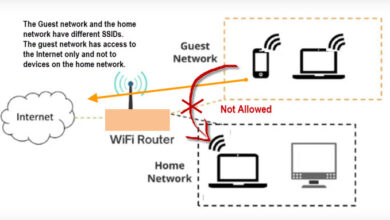Safeguarding Confidentiality: Cybersecurity and Compliance in the Print Mail Industry

In the digital age, where data breaches and cyber threats lurk around every virtual corner, the importance of cybersecurity and compliance cannot be overstated. While much emphasis is rightly placed on securing digital assets, the significance of safeguarding physical documents in the print mail industry should not be overlooked. In an era where direct mail automation and HIPAA-compliant printing mailing services are becoming increasingly prevalent, businesses must prioritize cybersecurity and compliance measures to protect sensitive information. Let’s delve into what direct mail automation entails, explore the significance of HIPAA-compliant printing mailing services, and discuss strategies for ensuring cybersecurity and compliance in the print mail industry.
Direct mail automation:
Direct mail automation is revolutionizing the way businesses communicate with their customers. In essence, it involves the use of technology to streamline the process of creating, printing, and sending physical mail, such as letters, postcards, and brochures. By automating various aspects of the direct mail workflow, businesses can significantly improve efficiency, reduce costs, and enhance the overall effectiveness of their marketing campaigns. From personalized mail merge to bulk printing and postage, direct mail automation solutions offer a wide range of features designed to simplify and optimize the mail delivery process.
Advantages of direct mail automation:
One of the key advantages of direct mail automation is its ability to target specific demographics with tailored messaging. By harnessing data analytics and customer segmentation techniques, businesses can create highly personalized mailings that resonate with their target audience. Whether it’s promoting a new product, announcing a special offer, or sending personalized invitations, direct mail automation enables businesses to deliver relevant content directly to the intended recipients’ mailboxes. This targeted approach not only improves the likelihood of engagement but also enhances the overall customer experience.
However, with great convenience comes great responsibility, especially when dealing with sensitive information. In industries such as healthcare, finance, and legal services, where confidentiality is paramount, ensuring the security of printed documents is essential. This is where HIPAA-compliant printing mailing services come into play. HIPAA, the Health Insurance Portability and Accountability Act, sets forth strict guidelines for protecting the privacy and security of patients’ medical information. HIPAA-compliant printing mailing services adhere to these regulations by implementing robust security measures to safeguard sensitive data throughout the printing and mailing process.
HIPAA-compliant printing mailing services:
HIPAA-compliant printing mailing services employ various security protocols to ensure the confidentiality, integrity, and availability of protected health information (PHI). From encrypted file transmission and secure printing facilities to tamper-evident packaging and certified mail delivery, these services take every precaution to prevent unauthorized access, disclosure, or tampering of sensitive documents. By partnering with HIPAA-compliant providers, healthcare organizations can mitigate the risk of data breaches and avoid costly penalties for non-compliance.
In addition to HIPAA compliance, cybersecurity is a top priority for the print mail industry as a whole. With cyber threats evolving rapidly, print mail businesses must remain vigilant and proactive in safeguarding their infrastructure and data assets. From malicious hacking attempts to insider threats and social engineering attacks, the risks facing print mail operations are diverse and ever-present. Therefore, implementing comprehensive cybersecurity measures is essential to mitigate these risks and maintain the trust and confidence of customers.
Multi-layered approach:
One of the fundamental principles of cybersecurity is to adopt a multi-layered approach that addresses various aspects of threat prevention, detection, and response. This includes implementing firewalls, antivirus software, and intrusion detection systems to protect against external threats, as well as conducting regular security audits and employee training to mitigate internal risks. Moreover, establishing robust access controls, encryption protocols, and data loss prevention mechanisms can help safeguard sensitive information from unauthorized access or disclosure.
Furthermore, leveraging emerging technologies such as blockchain and digital signatures can enhance the security and authenticity of printed documents. By incorporating blockchain-based solutions, print mail businesses can create immutable records of document transactions, thereby preventing tampering or alteration of critical information. Similarly, digital signatures provide a secure and verifiable method of authenticating document origin and integrity, reducing the risk of forgery or fraud.
Conclusion:
In conclusion, cybersecurity and compliance are integral aspects of the print mail industry, particularly in the context of direct mail automation and HIPAA-compliant printing mailing services. By prioritizing the security and confidentiality of printed documents, businesses can mitigate the risk of data breaches, protect sensitive information, and maintain regulatory compliance. Through a combination of robust security measures, employee training, and technology investments, print mail operations can effectively safeguard against cyber threats and ensure the integrity of their mail delivery processes. In an increasingly digital world, safeguarding physical documents remains as important as ever, and print mail businesses need to adapt and evolve in response to evolving cybersecurity challenges.



